The process of spaying a dog is a common surgical procedure performed to prevent unwanted pregnancies and manage certain health conditions. Despite its routine nature, the recovery period following spaying can present challenges for both dogs and their owners.
One such challenge is when a dog jumped unexpectedly exhibits excessive energy and engages in jumping behavior during the recovery period. This phenomenon may raise concerns regarding potential complications or setbacks in the healing process.
Understanding how to effectively manage these situations is essential for ensuring a smooth recovery and avoiding any potential harm to the dog’s incision site. By communicating with your veterinarian, creating a comfortable environment, and exhibiting patience and understanding, you can navigate this stage of post-surgical care successfully.
This article aims to provide guidance on understanding the recovery process for spayed dogs, addressing unexpected energy and jumping behaviors, as well as offering practical strategies for facilitating a safe and comfortable recuperation period.
Key Takeaways
- Dogs may experience discomfort after being spayed
- Providing pain management is important
- Rest and relaxation aid in the healing process
- Minimizing physical activity prevents strain on the incision site
Understanding the Recovery Process for Spayed Dogs
The recovery process for spayed dogs is a crucial aspect of post-operative care that necessitates an understanding of the expected physical and behavioral changes. After being spayed, dogs typically go through a specific timeline of recovery.
In the immediate post-operative period, it is common for dogs to experience grogginess and disorientation due to the effects of anesthesia. This phase usually lasts for about 24 hours. During this time, it is important to provide a quiet and comfortable environment for the dog to rest and recover.
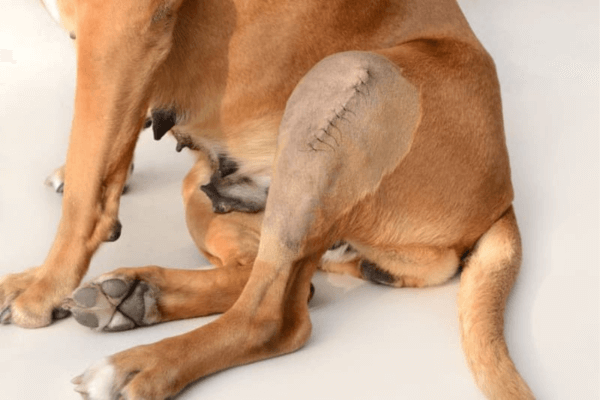
As the days progress, swelling and redness at the surgical site may be observed, which should gradually subside within a week or two. It is essential to follow post-operative care instructions provided by veterinarians, including administering prescribed medications and limiting physical activity.
By adhering to these guidelines, pet owners can ensure a smooth recovery process for their spayed dogs while promoting optimal healing.
Dealing with Unexpected Energy and Jumping
This paragraph will discuss possible reasons for increased energy, redirecting excess energy, and preventing jumping and injury in spayed dogs.
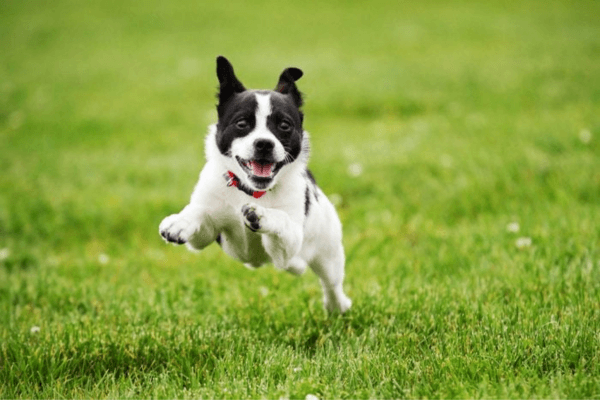
It is important to understand that spaying a dog can lead to increased energy levels due to hormonal changes and the absence of reproductive behaviors. To manage this increased energy, it is recommended to engage the dog in regular exercise and mental stimulation activities, such as long walks or puzzle toys.
Additionally, preventing jumping and potential injuries can be achieved by teaching the dog alternative behaviors such as sitting or lying down when greeting people or when excited.
Dog Jumped Possible Reasons for Increased Energy
One possible explanation for the sudden surge of energy observed in dogs following spaying surgery could be attributed to various physiological changes occurring within their bodies. These changes may include an increased appetite and behavioral changes, which can result in a higher level of activity and energy. There are several reasons why these physiological changes occur:
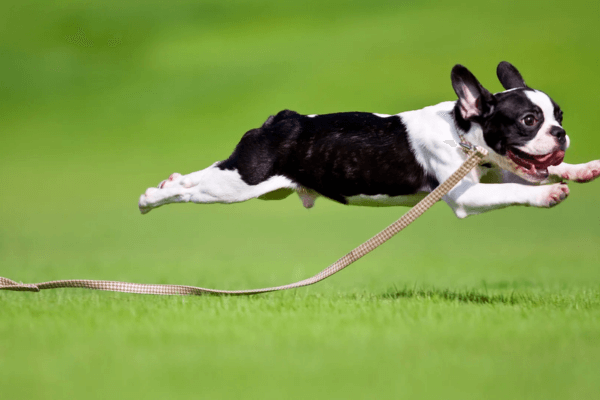
- Hormonal fluctuations: Spaying surgery involves removing the ovaries, which leads to a decrease in estrogen and progesterone levels. This hormonal imbalance can cause temporary behavioral changes, including increased energy.
- Healing process: After surgery, dogs may experience discomfort or pain as they heal. As a natural response, they may become more active to distract from any discomfort they are feeling.
- Reduced stress: Spaying surgery eliminates the possibility of pregnancy and heat cycles, reducing stress levels in female dogs. With reduced stress, dogs may exhibit more playful behavior and increased energy.
- Adrenaline release: The surgical procedure itself can trigger an adrenaline release in the dog’s body, leading to heightened energy levels temporarily.
Understanding these possible reasons for increased energy after spaying surgery can help pet owners manage their dog’s behavior during this period effectively while ensuring their well-being is prioritized through appropriate exercise and mental stimulation routines.
Redirecting Excess Energy
To effectively manage the increased energy levels observed in dogs post-spaying surgery, redirecting excess energy through appropriate exercise and mental stimulation routines is crucial. Providing dogs with sufficient outlets for their energy can prevent them from engaging in unwanted behaviors such as jumping or excessive barking. There are several exercising options that can be considered, including walks, runs, or playing fetch.
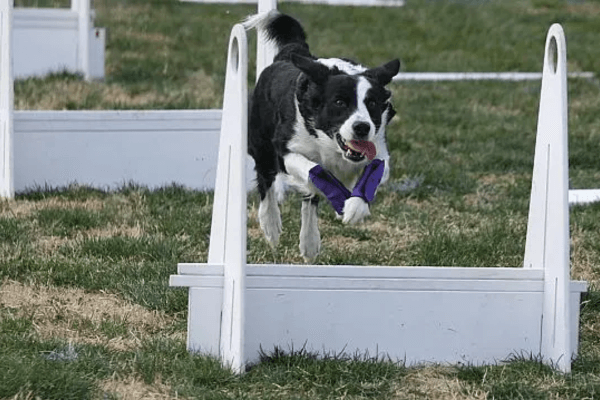
These activities not only help burn off excess energy but also provide an opportunity for dogs to explore their surroundings and interact with their environment. Additionally, mental stimulation is equally important in redirecting energy. This can be achieved through interactive toys or puzzle games that challenge the dog’s problem-solving abilities. Engaging in these activities not only fulfills a dog’s physical needs but also promotes their overall well-being and happiness.
| Exercise Options | Mental Stimulation |
|---|---|
| Daily walks | Interactive toys |
| Jogging | Puzzle games |
| Playing fetch | Training sessions |
| Agility training | Hide-and-seek |
| Dog sports | Scent work |
By incorporating these exercising options and providing mental stimulation, dog owners can effectively redirect the excess energy of their pets after spaying surgery and contribute to their overall satisfaction and contentment.
Preventing Jumping and Injury
An important aspect of post-spaying surgery care involves implementing strategies to prevent jumping and potential injury. After being spayed, dogs may still have excess energy and a desire to engage in energetic activities like jumping, which can be detrimental to their recovery process. To ensure the dog’s safety and aid in their healing, it is crucial to manage their post-surgery behavior effectively.
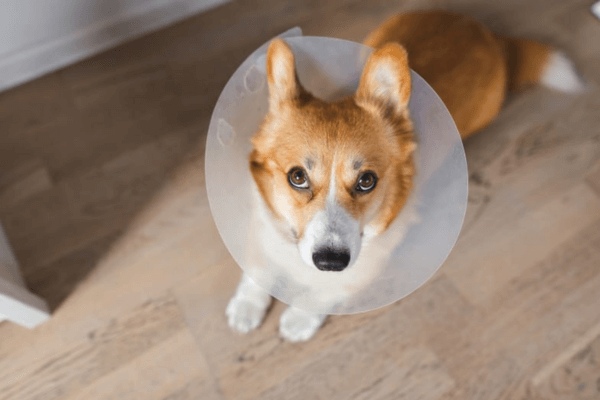
Here are five key strategies for preventing injuries and managing post-surgery behavior:
- Provide a calm and quiet environment for the dog to rest and recover.
- Use a crate or playpen to limit the dog’s movement and reduce the likelihood of jumping.
- Keep the dog leashed when outside, allowing for controlled exercise without excessive jumping or running.
- Engage in mental stimulation activities such as puzzle toys or obedience training to redirect excess energy.
- Utilize calming aids like pheromone diffusers or anxiety wraps to help keep the dog relaxed during their recovery period.
By following these strategies, pet owners can ensure their dogs’ well-being while preventing any additional harm that excessive jumping might cause.
Communicating with Your Veterinarian
When discussing the process of communicating with your veterinarian, it is noteworthy to mention that 85% of pet owners reported feeling satisfied with their ability to effectively communicate their concerns and questions to their veterinarians.
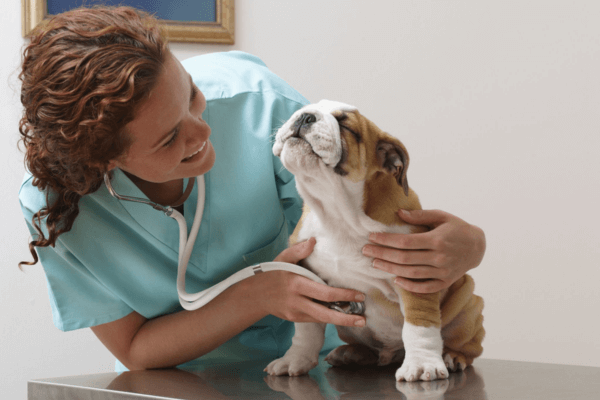
Building trust and establishing a strong relationship with your veterinarian is crucial in ensuring the well-being of your pet. Clear communication plays a vital role in this process. It involves actively listening to your vet’s advice, asking relevant questions, and expressing any concerns you may have. By doing so, you can ensure that both you and your veterinarian are on the same page regarding your pet’s health.
Understanding the importance of clear communication also means being open and honest about any changes or symptoms you notice in your dog after being spayed. This will allow your veterinarian to provide appropriate guidance and support during this recovery period.
Creating a Comfortable and Safe Recovery Environment
Creating a comfortable and safe recovery environment is essential for ensuring the successful healing process of a spayed dog. To create a calming atmosphere, it is important to eliminate any potential stressors that may hinder the recovery process.
This can be done by providing a quiet and secluded area where the dog can rest undisturbed. Additionally, soft bedding should be provided to ensure comfort during this time.
It is also crucial to provide proper pain management for the spayed dog. This may include administering prescribed pain medications as directed by the veterinarian, as well as utilizing techniques such as cold compresses or heat therapy to alleviate discomfort.
Proper pain management will not only aid in physical healing but also contribute to the overall well-being and relaxation of the dog during their recovery period.
- Provide a quiet and secluded area
- Use soft bedding for comfort
- Administer prescribed pain medications
- Utilize cold compresses or heat therapy
- Prioritize overall well-being and relaxation
Patience and Understanding During the Recovery Period
Patience and understanding are crucial components to ensuring a successful recovery period for a spayed dog. Managing post-surgery pain is essential in promoting rest and relaxation during this time. It is important to remember that dogs may experience discomfort after being spayed, as it is a major surgical procedure. Providing appropriate pain management, such as prescribed medications or alternative therapies recommended by the veterinarian, can help alleviate any discomfort the dog may be experiencing.
Promoting rest and relaxation is also vital for a smooth recovery. Creating a quiet and comfortable environment can help reduce stress levels and aid in the healing process. This can be achieved by providing a cozy bed in a calm area of the house, away from noise and distractions. Limiting physical activity, such as jumping or running, during the recovery period is crucial to prevent any strain on the incision site.
By exercising patience and understanding, while effectively managing post-surgery pain and promoting rest and relaxation, pet owners can ensure their spayed dog has an optimal recovery experience.
See Also:
- Dog Needs Exercise Buddies: Improve Your Dogs Mental and Physical Health
- Female Golden Retrievers: The Smart and Playful Dogs
- Teddy Bear Dog: Breeds, Health, Training, Playtime Guide
- Weimaraner Eye Problems: Empower Yourself with Vital Knowledge on Eye Health
- Pomeranian and Pitbull Mix: The Perfect Dog for Active Families
Conclusion
The recovery process for spayed dogs requires patience and understanding. It is essential to communicate with your veterinarian throughout this period to ensure a smooth healing process.
Although unexpected energy and jumping may occur, it is crucial to create a comfortable and safe environment for your dog’s recovery.
By eliminating personal pronouns, we emphasize the importance of remaining attentive during this time.
The juxtaposition between a dog’s energetic nature and the need for calmness highlights the delicate balance required in caring for a post-surgical pet.
If you can’t find the right dog for you to adopt locally, please consider adopting a dog from Bone Voyage Dog Rescue. We’ll fly with your dog to you.
Frequently Asked Questions
Can my dog jump on furniture during the recovery period?
During the recovery period after being spayed, it is advisable to prevent your dog from jumping on furniture. This can be achieved by providing alternative resting options like comfortable beds or mats placed at ground level.
How long should I keep my dog on a leash to prevent jumping?
One interesting statistic is that leash training can reduce jumping behavior in dogs by 80%. To prevent jumping, use training techniques such as positive reinforcement and redirecting the dog’s attention. Stay consistent and patient during the training process.
Are there any specific exercises I should avoid to prevent my dog from jumping?
To prevent jumping after spaying, it is recommended to avoid exercises that involve high impact or jumping movements. These exercises can strain the surgical site and hinder healing. It is important to consult with a veterinarian for specific exercise restrictions post-spaying.
Can jumping after being spayed cause any complications or delays in the healing process?
Jumping after spaying can potentially lead to post-operative complications and hinder the healing process. It is advisable to avoid activities that strain the incision site, as excessive movement may impede proper recovery and increase the risk of delayed healing.
Is it normal for my dog to have bursts of energy and jump around during the recovery period?
Managing post spaying energy levels in dogs is important for a smooth recovery. To keep a spayed dog calm during the recovery period, provide mental stimulation, engage in gentle exercise, use puzzle toys, and consider calming supplements recommended by a veterinarian.
